
Best Website for Herkimer Diamond Information
Last Updated:

About this Webpage:


Free Website Where Herkimer Diamond Enthusiasts Share Information with the Public
Scroll down
Dr.C. did two talks at the Herkimer Diamond Festival (July)which are in a Youtube movie. The research on the Herkimer District is in need of samples and photos.
How can you help? Visit the "how to help" page.

Sulfides are minerals where a metal has combined with sulphur. Pyrite, sometimes called "fools gold", is iron combining with sulphur. Following several years of field work (2008-2011) it looks like sulfides were common throughout the district. In some deposits, like DA, the weathering is so severe that there are only remnants left behind.
On this page there are photos of both sulfides and their remnants.


Early sulfides - phase 1

Late sulfides - phase 2

W. David Hoisington, Ph.D.

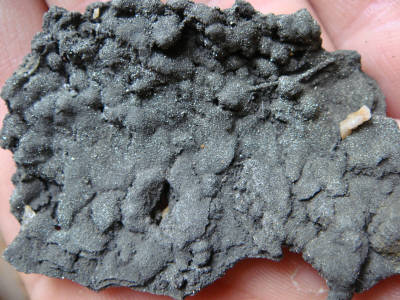

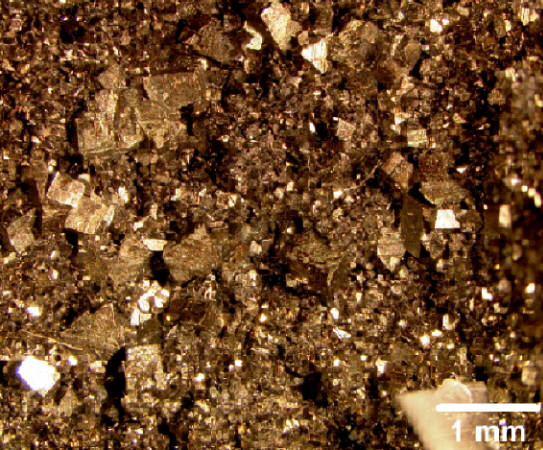
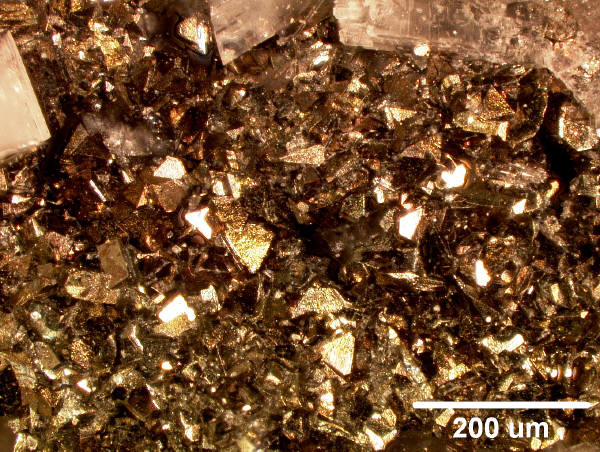

Early sulfides - Different Shapes

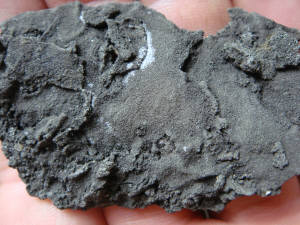

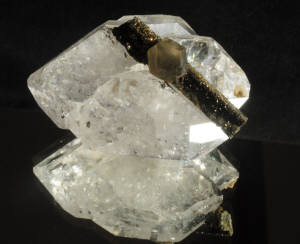
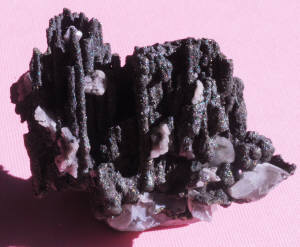
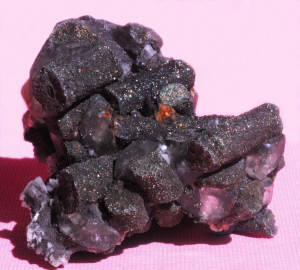
Photo 1
Photo 2
Photo 3
Photo 5
Photo 4
All of these photos are from the HBQ in St. Johnsville. It is the place in the Herkimer district that thus far has produced the best preserved sulfide specimens. Specimens donated by Frank. Most of the photos by Dr.C. 2010.
Photo 1: Shows the common "plate coating" form, similar to the above photos. Photo by Frank, 2010.
Photos 2 & 3: This is the "bumpy rod" form. See also the inclusion page.
Photos 4 and 5: This is the "circular rod" form.
Photo 6: Closeup of the marcasite and pyrite rounded forms (see photo 2). You can see the coating of minute crystals. It is the surface in photos 1-5.
Photo 7: Very rare pyritohedrons, which have a pentagon face. You can see this at the arrow and also just right of center in the photo. Specimen is 1 cm long. From HBQ, donated by Frank, 2009.
See the HBQ page for in place photos.
Photo 6

Early sulfides - remnants

The sulfides in the Herkimer district are often weathered into oxides. Below left is a specimen from AD, donated by Bill & Anne (2008). It is an ugly specimen and these seldom get saved by rock hounds. This is from the floor of a pocket and it has not been cleaned. The layer of red brown is probably weathered sulfide crystals that were at one time metal looking very much like what is shown in the above photos. The specimen is coated with little fragments of rocks along with mud which probably happened at the same time that the sulfides turned from metal to red ochre. Some of the mud may be original to the formation of Herkimer diamonds but most is likely not. The fragments are probably original to the pocket - although moved around by ground water. Photo, Dr.C., 2010..
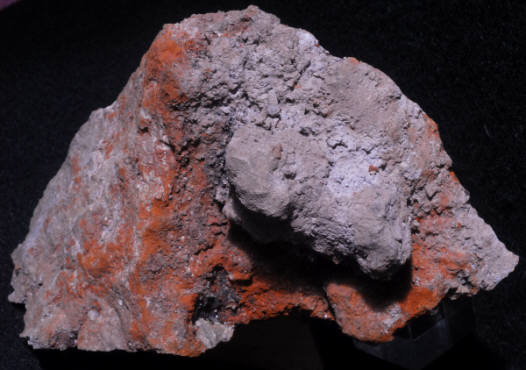

The weathered sulfides into oxides can form a mass of rusted metal (limonite, goethite?). Above is a specimen from TCR, (2010). It is also an ugly specimen and was found in the "bulldozer pile". There were larger pieces of this, over a foot, but this one is here as a comparison to the unaltered sufide plate photos on this web page. It is worth notining that a pocket of these was found and not much else in it. This is similar to HBQ. Photo, Dr.C.
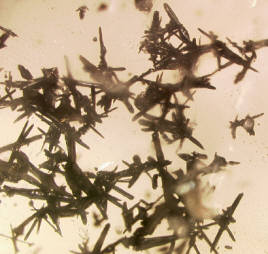
Throughout the Herkimer district there are these tiny needle shaped crystals that are preserved inside both Herkimer diamonds (left - see also inclusion page) and inside calcite (right). This is a late sufide episide of just marasite (as far as the field data has revealed - 2011).
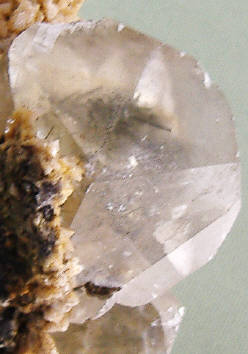
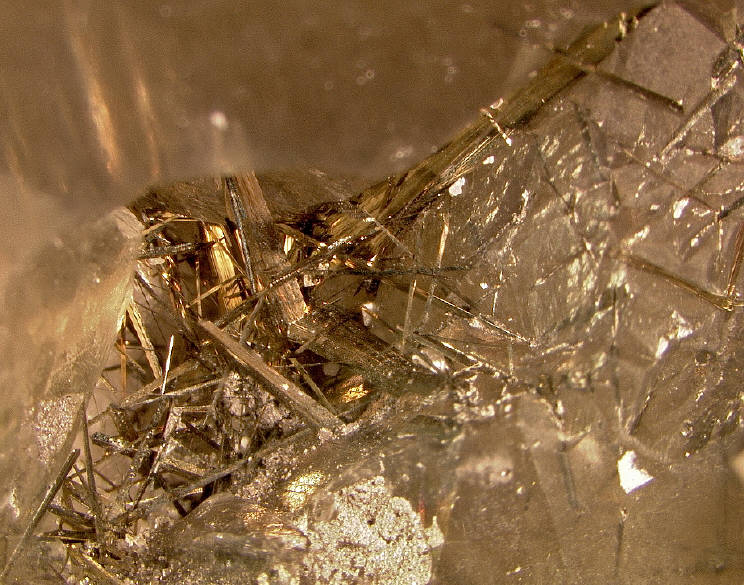
Dec., 2011
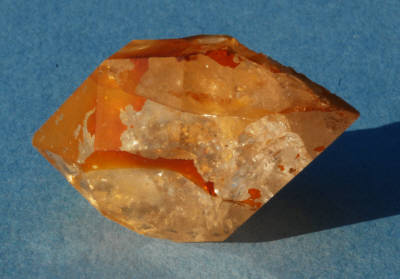
In some places the weathering is so severe that no preserved sulfide shapes can be found. This is true at DA. But what can be found are coatings of rust. Here is a white Herkimer diamond, 7 cm tip-to-tip, that is obviously rust coated. The rust can fill in cracks and give the herkimer diamond a golden appearance. This rust is evidence that iron sulfides were most likely present (beyond the late phase tiny needles frozen in calcite and quartz). Photo, Dr.C. 2011.
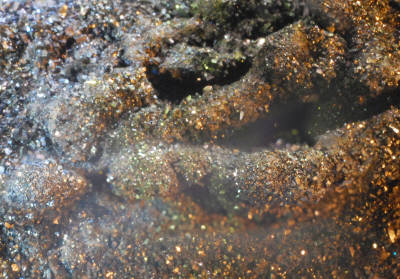
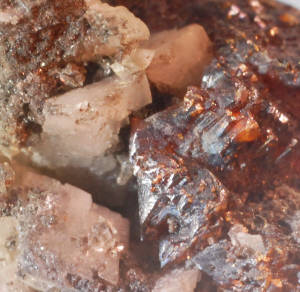


Photo 7
